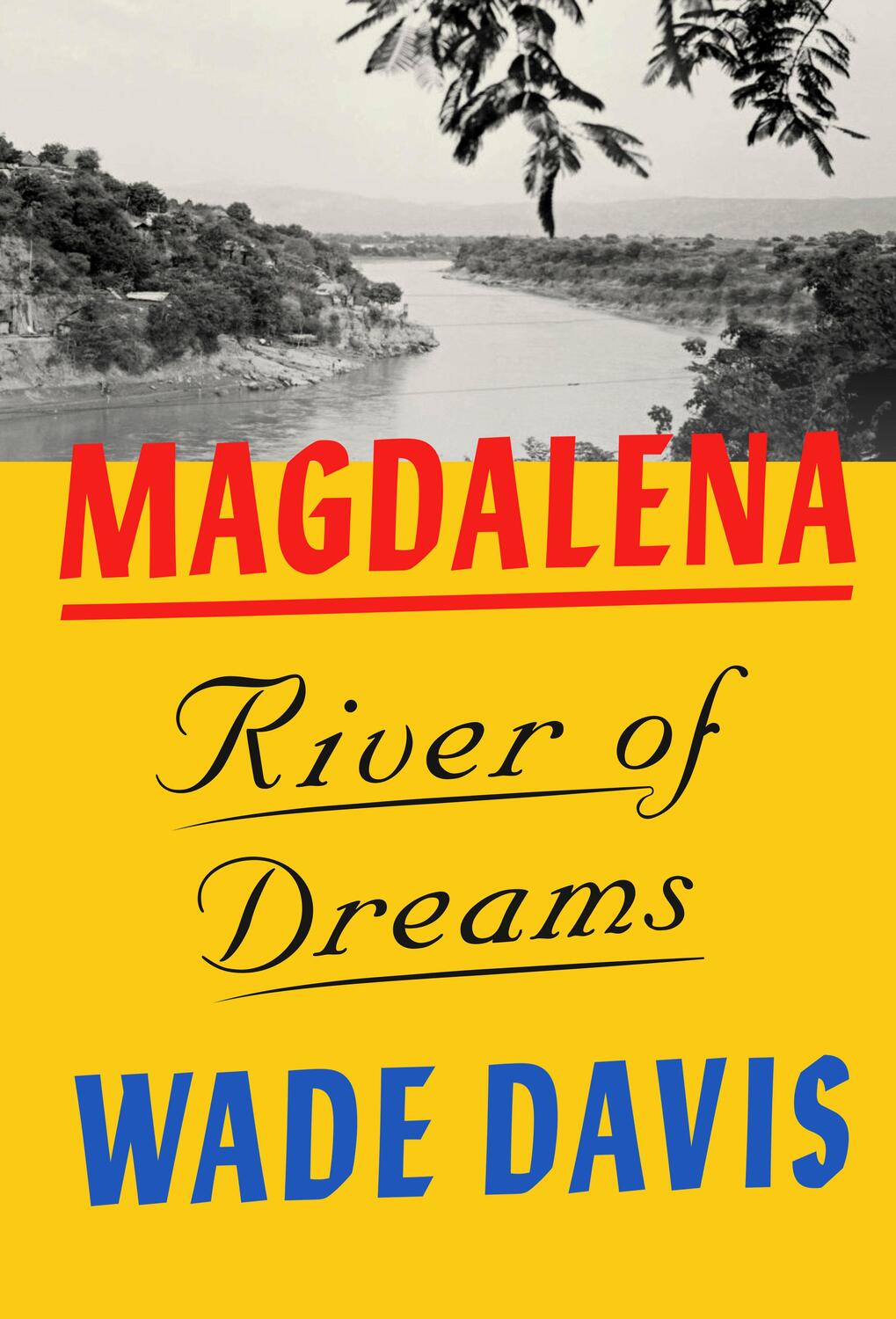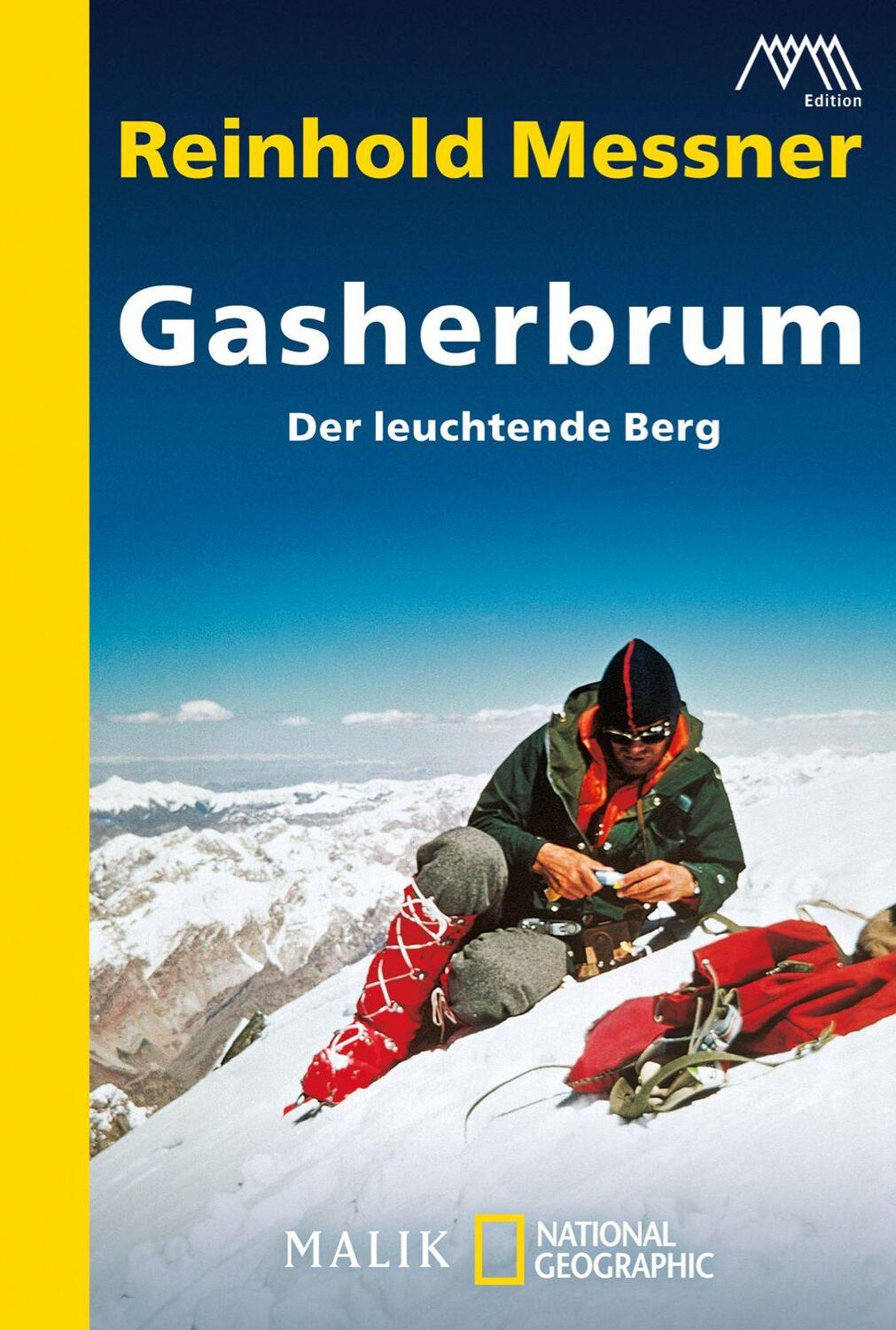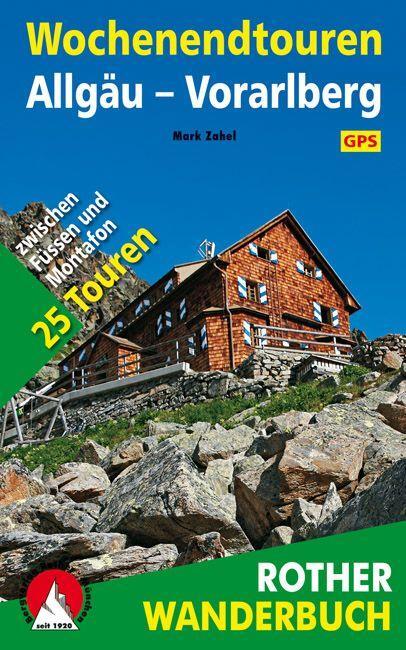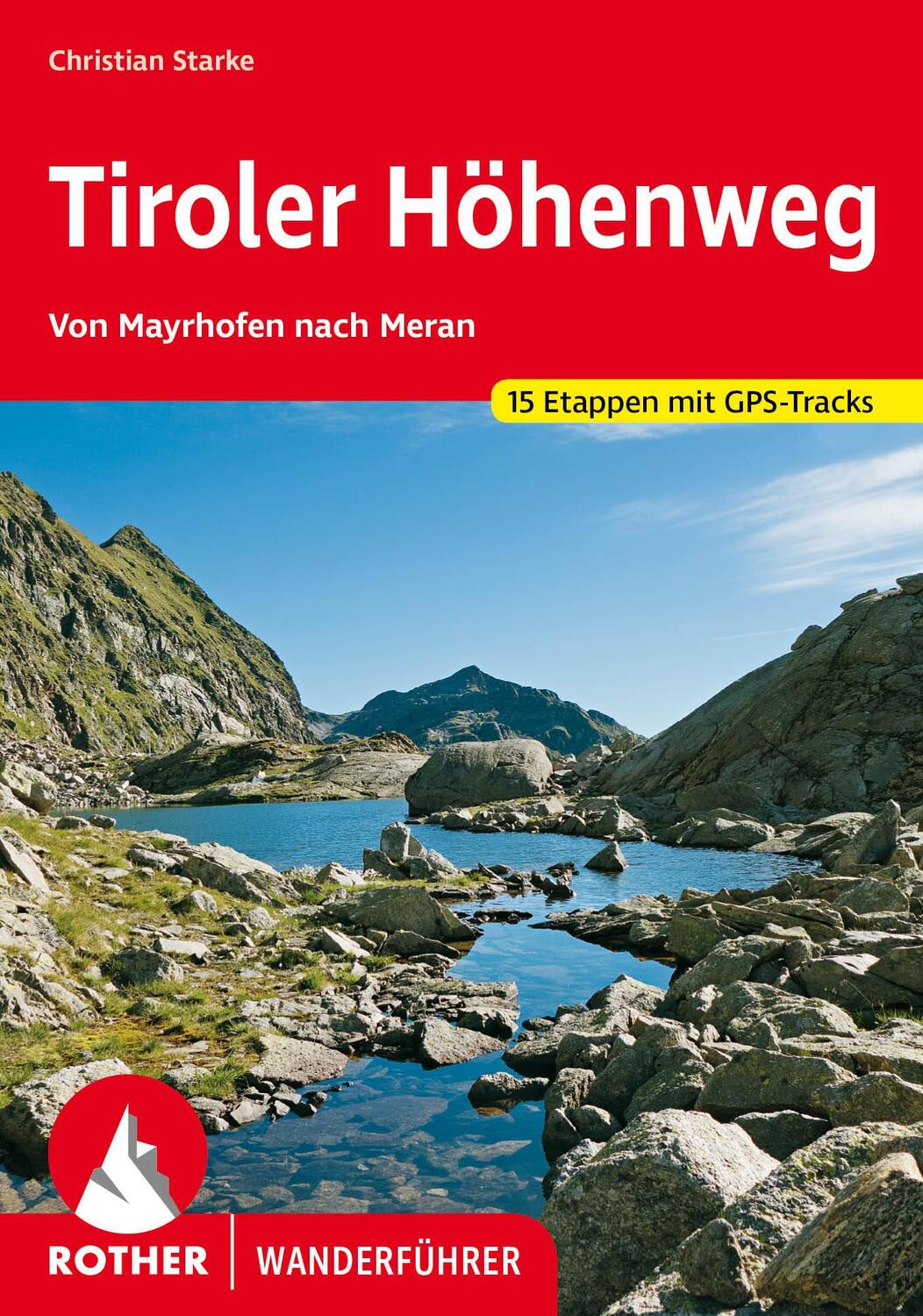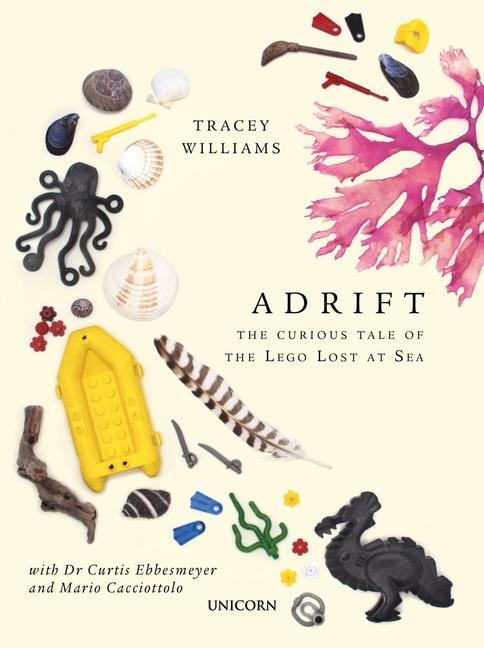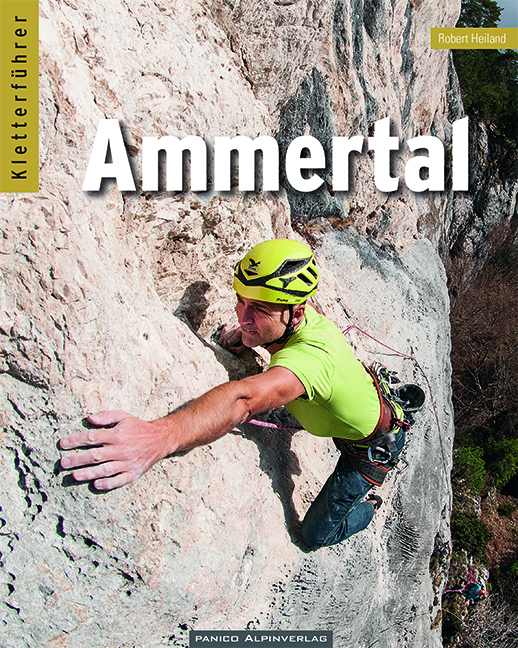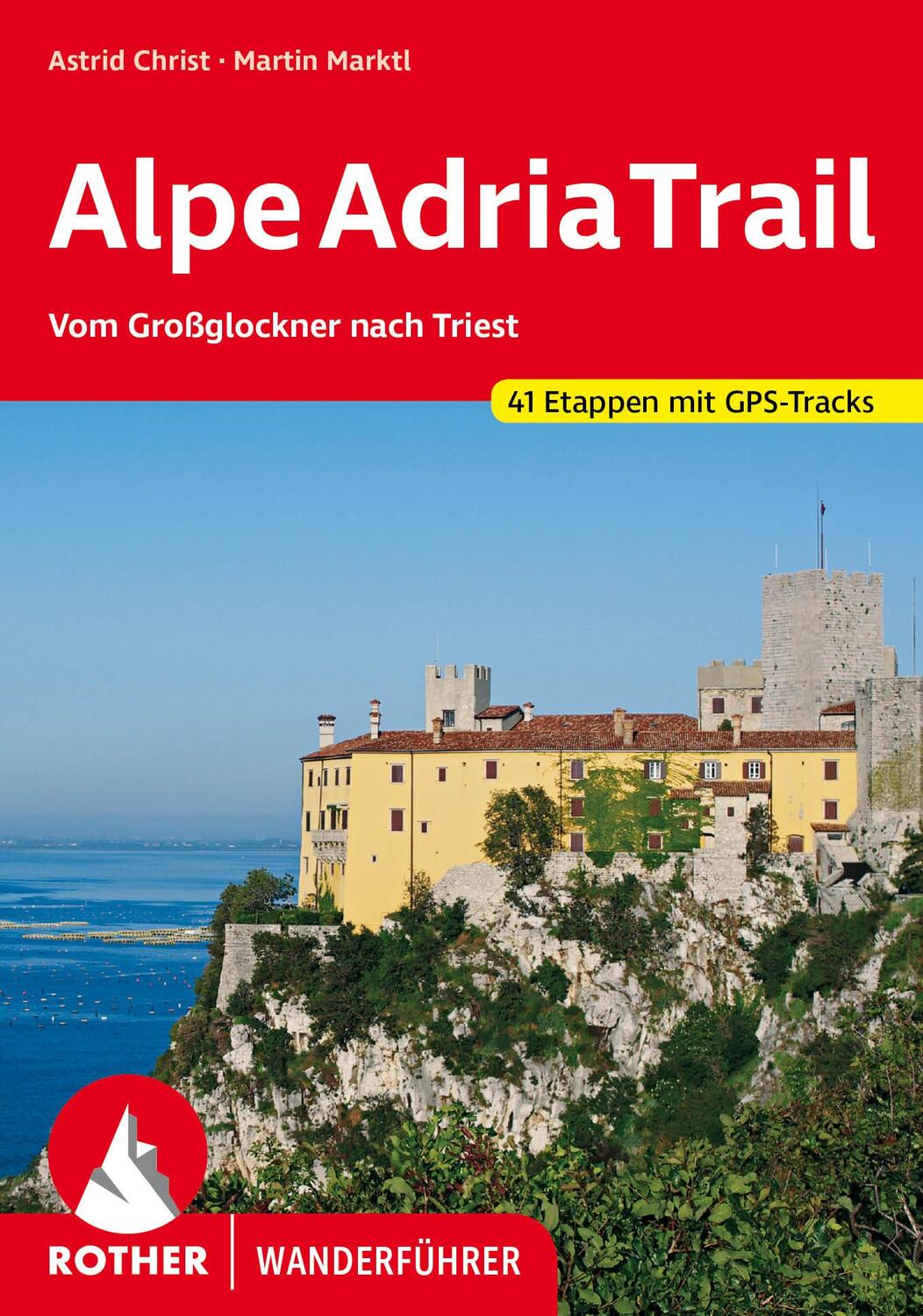Dekorationsartikel gehören nicht zum Leistungsumfang.
Sprache:
Englisch
27,35 €*
Versandkostenfrei per Post / DHL
Lieferzeit 1-2 Wochen
Kategorien:
Beschreibung
Bocas de Ceniza
The mouth of the Río Magdalena is the color of the earth. To the north, beyond a sea of golden clouds, the Caribbean sky fades to lapis blue in the falling light. To the west, the sun sets upon the Atrato and the rain forests of Darién, the Gulf of Urabá, and all the lost islands of Panama. To the east, the beaches and rocky shores run away to Santa Marta and beyond, past the Ciénaga Grande, the vast wetland that shimmers as a great mirror to the heavens, to the soaring flanks of the Sierra Nevada de Santa Marta, the highest coastal mountain range on earth, reaching finally to the sands of the Guajira, the desert peninsula where Colombians reinvented grit, commerce, resilience, and passion.
To the south, upriver, the lights of Barranquilla glow as a distant halo over a city that from its inception has inexplicably turned its back on the river that gave it life. Founded between 1627 and 1637, it remained a small fishing village until the arrival of commercial steam vessels in 1824, but even then, it could never decide whether to be a port on the river or a city on the sea. The building of a railroad from Barranquilla 400 miles upriver to Salgar in 1872 opened the way for a great maritime outlet to the world, and oceangoing vessels entered the river mouth for the first time, struggling against a current that carried the weight and promise of an entire nation. Indeed, one might say that the Magdalena carried the land itself. By 1883, its burden of sediments and silt had once again buried the estuary, rendering the river mouth impassable.
In 1893, the construction of the world’s longest and most elaborate pier at Puerto Colombia, on the coast twelve miles west of Barranquilla, redirected commerce for a decade, but by 1906, attention returned to the potential of Bocas de Ceniza, the actual mouth of the river. With grand plans, both to dredge the river channel and to construct a modern port at Barranquilla, the government hired an American engineering firm in 1907, only to turn to the Germans in 1912, then a national consortium in 1919, until finally, in 1924, with little accomplished, the flow of money was directed once again to the Americans. Puerto Colombia was abandoned, its magnificent pier left to crumble into fragments of concrete and iron. In 1943, in a move tainted by the scent of politics, the use of any of the port facilities at Puerto Colombia was prohibited by law. Ultimately, all that remained was destroyed by the sea.
The river mouth, meanwhile, was reinforced with a long line of breakers, parallel to the flow, intended to direct the Magdalena into a narrow channel, concentrating its force that it might sweep all sediments to the sea. Unfortunately, the barriers, built at considerable expense over nearly a decade, achieved quite the opposite effect, trapping the sediments and clogging the estuary as never before. The global economic crisis of 1929 suspended work for several years, and it was not until 1936 that President Alfonso López Pumarejo, crossing into the mouth of the Magdalena aboard a destroyer of the Colombian navy, accompanied by an entourage of ministers, admirals, governors, and mayors, was able to officially inaugurate the new canal and the proposed Maritime and Fluvial Terminal, facilities that would not in fact be completed until 1939. “Barranquilla,” he declared, “is, from now on, a port of the sea.” Regrettably, this proved to be wishful thinking.
For a time, beginning in 1936, seagoing freighters, vessels of serious draft, were able to make their way into the river and reach the city. But they were fighting the power of a river born a thousand miles to the south in the Macizo Colombiano, a rugged knot of mountains that soars over the continent, giving rise not just to the Magdalena but to the Ríos Putumayo, Cauca, Caquetá, and Patía, not to mention the three great branches of the Andes, which fan out in Colombia as immense cordilleras, running northward toward the broad Caribbean coastal plain.
In the body of Colombia, the Río Magdalena is the main artery. A new river, as measured in geological time, with a drainage encompassing fully a quarter of the nation, it flows from one end of the country to the other, through an astonishingly diverse landscape of glaciers and snow-covered volcanoes, cloud forests and páramos saturated by rain. Fed by lakes and countless mountain streams, it falls into a great lowland depression once covered by rich tropical forests, mangroves darkened by caimans, and waterways manicured by manatees. Scattered across the entire basin of the lower river are literally thousands of shimmering wetlands, some the size of the sky. Indeed, the entire Bajo Magdalena is a world of water, which ebbs and flows with the seasons, causing the river itself to overflow its banks, reaching a width in places of as much as fifty miles, even as its estuary expands to embrace and define both the geography and hydrology, not to mention the economy and culture, of all coastal Colombia.
Attempts over the years to transform Bocas de Ceniza, focused narrowly on reconfiguring just the mouth of the river, invariably proved to be quixotic gestures that defied nature and brought to mind King Canute’s famous failure to hold back the ocean waves. Every year the Río Magdalena, despite its meanderings, carries 250 million tons of silt to the sea, the equivalent of eighteen hundred large industrial truckloads of sediments being dumped at the river delta every day. The engineers, despite their best efforts, never really had a chance. The names of the enterprises charged with taming the river, building the breakwaters, and dredging the channel changed by the decade, but none managed to achieve the impossible. The river silted up in 1942 and 1945, and again in 1958 and 1963. Millions of dollars had been invested, and no doubt many additional millions will be spent in the future on new and perhaps improved plans to industrialize the river mouth, but in the end, the Río Magdalena will always roll on, carrying all things to the sea, merging, as Shakira so gracefully sings, the body of Colombia like a lover to the waters of all the world.
From the river settlement of Las Flores, an old fishing village today engulfed by the outskirts of Barranquilla, a narrow-gauge railway runs north along the Magdalena, past modest shipyards and repair shops, restaurants and docks, rusted barges tethered to the shore. Reaching the coast where the wide crescent beaches are covered with plastic refuse and kelp, it continues onto the original breakwater built in the 1920s, a narrow jetty of tumbled riprap that stretches for several miles into the sea. The rock foundations remain solid, but the track, twisted and dilapidated, with short sections patched with wooden poles in place of iron, has clearly seen better days.
The open-air cars, with their coughing and sputtering engines, frequently derail, prompting a frenzy of excitement as passengers unload and small crews of young men furiously lift the carriages back onto the rails. When two cars going in opposite directions meet on the single track, the passengers move from one to the other with quiet and polite efficiency—unless, of course, music is heard, coming from a radio, perhaps an old cassette player; then everything is forgotten as people mingle and invariably someone begins to dance. Vallenatos, stories of the soul sung with an accordion’s plaintive cry, generally imply but a short delay. But if the rhythm is cumbia, sensuous and seductive, and the long skirts of the women begin to twirl with each tight turn of their feet, one best come up with new plans for the day.
Bocas de Ceniza is a popular tourist destination, mostly for Colombian families and students. The tracks reach half the length of the spit to a narrow roundabout where, beneath the protective gaze of a white Madonna perched on a cement pole, everyone gets off to wander. Small children, impeccably dressed, dart about like butterflies. Teenage girls, in tight jeans and tank tops sparkling with rhinestones, defy gravity as they delicately make their way on high heels further down the jetty, tiptoeing among the stones and twisted remnants of the rail tracks. Older women search in vain for shade, settling for a cold drink, perhaps a raspado, a cone of shaved ice drenched in syrup.
The jetty is lined on both sides by small wooden shacks, home to the men and women who live on the rocks, fishing by night, sleeping by day. In the bright sun, their absence is felt; the place feels lifeless and deserted. The spit of stones is in no place more than thirty feet across. On one side is the sea, dark and brooding, with waves pounding the rocks and surging onto the jetty itself. On the other side flows the Magdalena, brown with silt, too toxic to drink, contaminated by human and industrial waste, which flows into it from every town and city in a drainage that is home to forty million Colombians. The fishermen use the river to wash their clothes and to bathe, but not even the hardiest among them would dare drink the water. Some with their recollection of darker days, when bodies regularly floated by and the river served as the graveyard of the nation, hesitate even to eat the fish.
Theirs seems a precarious existence, perched on the edge of a narrow jetty, living in shacks tacked together from old boards bleached grey by the sun. Exposed as they are, a single wave could sweep away their lives. And yet, as if in conscious defiance of despair, rejecting any overtures of pity, all of them have painted their homes with poetry, simple declarations of faith and contentment, all signed by the authors. “I am happy to live at Bocas de Ceniza,” declares Wilfrido de Ávila Barrios. “Thanks to the fish, I raised my sons and sustained my family and for that reason I never want to leave this place, that’s my wish and that of my...
The mouth of the Río Magdalena is the color of the earth. To the north, beyond a sea of golden clouds, the Caribbean sky fades to lapis blue in the falling light. To the west, the sun sets upon the Atrato and the rain forests of Darién, the Gulf of Urabá, and all the lost islands of Panama. To the east, the beaches and rocky shores run away to Santa Marta and beyond, past the Ciénaga Grande, the vast wetland that shimmers as a great mirror to the heavens, to the soaring flanks of the Sierra Nevada de Santa Marta, the highest coastal mountain range on earth, reaching finally to the sands of the Guajira, the desert peninsula where Colombians reinvented grit, commerce, resilience, and passion.
To the south, upriver, the lights of Barranquilla glow as a distant halo over a city that from its inception has inexplicably turned its back on the river that gave it life. Founded between 1627 and 1637, it remained a small fishing village until the arrival of commercial steam vessels in 1824, but even then, it could never decide whether to be a port on the river or a city on the sea. The building of a railroad from Barranquilla 400 miles upriver to Salgar in 1872 opened the way for a great maritime outlet to the world, and oceangoing vessels entered the river mouth for the first time, struggling against a current that carried the weight and promise of an entire nation. Indeed, one might say that the Magdalena carried the land itself. By 1883, its burden of sediments and silt had once again buried the estuary, rendering the river mouth impassable.
In 1893, the construction of the world’s longest and most elaborate pier at Puerto Colombia, on the coast twelve miles west of Barranquilla, redirected commerce for a decade, but by 1906, attention returned to the potential of Bocas de Ceniza, the actual mouth of the river. With grand plans, both to dredge the river channel and to construct a modern port at Barranquilla, the government hired an American engineering firm in 1907, only to turn to the Germans in 1912, then a national consortium in 1919, until finally, in 1924, with little accomplished, the flow of money was directed once again to the Americans. Puerto Colombia was abandoned, its magnificent pier left to crumble into fragments of concrete and iron. In 1943, in a move tainted by the scent of politics, the use of any of the port facilities at Puerto Colombia was prohibited by law. Ultimately, all that remained was destroyed by the sea.
The river mouth, meanwhile, was reinforced with a long line of breakers, parallel to the flow, intended to direct the Magdalena into a narrow channel, concentrating its force that it might sweep all sediments to the sea. Unfortunately, the barriers, built at considerable expense over nearly a decade, achieved quite the opposite effect, trapping the sediments and clogging the estuary as never before. The global economic crisis of 1929 suspended work for several years, and it was not until 1936 that President Alfonso López Pumarejo, crossing into the mouth of the Magdalena aboard a destroyer of the Colombian navy, accompanied by an entourage of ministers, admirals, governors, and mayors, was able to officially inaugurate the new canal and the proposed Maritime and Fluvial Terminal, facilities that would not in fact be completed until 1939. “Barranquilla,” he declared, “is, from now on, a port of the sea.” Regrettably, this proved to be wishful thinking.
For a time, beginning in 1936, seagoing freighters, vessels of serious draft, were able to make their way into the river and reach the city. But they were fighting the power of a river born a thousand miles to the south in the Macizo Colombiano, a rugged knot of mountains that soars over the continent, giving rise not just to the Magdalena but to the Ríos Putumayo, Cauca, Caquetá, and Patía, not to mention the three great branches of the Andes, which fan out in Colombia as immense cordilleras, running northward toward the broad Caribbean coastal plain.
In the body of Colombia, the Río Magdalena is the main artery. A new river, as measured in geological time, with a drainage encompassing fully a quarter of the nation, it flows from one end of the country to the other, through an astonishingly diverse landscape of glaciers and snow-covered volcanoes, cloud forests and páramos saturated by rain. Fed by lakes and countless mountain streams, it falls into a great lowland depression once covered by rich tropical forests, mangroves darkened by caimans, and waterways manicured by manatees. Scattered across the entire basin of the lower river are literally thousands of shimmering wetlands, some the size of the sky. Indeed, the entire Bajo Magdalena is a world of water, which ebbs and flows with the seasons, causing the river itself to overflow its banks, reaching a width in places of as much as fifty miles, even as its estuary expands to embrace and define both the geography and hydrology, not to mention the economy and culture, of all coastal Colombia.
Attempts over the years to transform Bocas de Ceniza, focused narrowly on reconfiguring just the mouth of the river, invariably proved to be quixotic gestures that defied nature and brought to mind King Canute’s famous failure to hold back the ocean waves. Every year the Río Magdalena, despite its meanderings, carries 250 million tons of silt to the sea, the equivalent of eighteen hundred large industrial truckloads of sediments being dumped at the river delta every day. The engineers, despite their best efforts, never really had a chance. The names of the enterprises charged with taming the river, building the breakwaters, and dredging the channel changed by the decade, but none managed to achieve the impossible. The river silted up in 1942 and 1945, and again in 1958 and 1963. Millions of dollars had been invested, and no doubt many additional millions will be spent in the future on new and perhaps improved plans to industrialize the river mouth, but in the end, the Río Magdalena will always roll on, carrying all things to the sea, merging, as Shakira so gracefully sings, the body of Colombia like a lover to the waters of all the world.
From the river settlement of Las Flores, an old fishing village today engulfed by the outskirts of Barranquilla, a narrow-gauge railway runs north along the Magdalena, past modest shipyards and repair shops, restaurants and docks, rusted barges tethered to the shore. Reaching the coast where the wide crescent beaches are covered with plastic refuse and kelp, it continues onto the original breakwater built in the 1920s, a narrow jetty of tumbled riprap that stretches for several miles into the sea. The rock foundations remain solid, but the track, twisted and dilapidated, with short sections patched with wooden poles in place of iron, has clearly seen better days.
The open-air cars, with their coughing and sputtering engines, frequently derail, prompting a frenzy of excitement as passengers unload and small crews of young men furiously lift the carriages back onto the rails. When two cars going in opposite directions meet on the single track, the passengers move from one to the other with quiet and polite efficiency—unless, of course, music is heard, coming from a radio, perhaps an old cassette player; then everything is forgotten as people mingle and invariably someone begins to dance. Vallenatos, stories of the soul sung with an accordion’s plaintive cry, generally imply but a short delay. But if the rhythm is cumbia, sensuous and seductive, and the long skirts of the women begin to twirl with each tight turn of their feet, one best come up with new plans for the day.
Bocas de Ceniza is a popular tourist destination, mostly for Colombian families and students. The tracks reach half the length of the spit to a narrow roundabout where, beneath the protective gaze of a white Madonna perched on a cement pole, everyone gets off to wander. Small children, impeccably dressed, dart about like butterflies. Teenage girls, in tight jeans and tank tops sparkling with rhinestones, defy gravity as they delicately make their way on high heels further down the jetty, tiptoeing among the stones and twisted remnants of the rail tracks. Older women search in vain for shade, settling for a cold drink, perhaps a raspado, a cone of shaved ice drenched in syrup.
The jetty is lined on both sides by small wooden shacks, home to the men and women who live on the rocks, fishing by night, sleeping by day. In the bright sun, their absence is felt; the place feels lifeless and deserted. The spit of stones is in no place more than thirty feet across. On one side is the sea, dark and brooding, with waves pounding the rocks and surging onto the jetty itself. On the other side flows the Magdalena, brown with silt, too toxic to drink, contaminated by human and industrial waste, which flows into it from every town and city in a drainage that is home to forty million Colombians. The fishermen use the river to wash their clothes and to bathe, but not even the hardiest among them would dare drink the water. Some with their recollection of darker days, when bodies regularly floated by and the river served as the graveyard of the nation, hesitate even to eat the fish.
Theirs seems a precarious existence, perched on the edge of a narrow jetty, living in shacks tacked together from old boards bleached grey by the sun. Exposed as they are, a single wave could sweep away their lives. And yet, as if in conscious defiance of despair, rejecting any overtures of pity, all of them have painted their homes with poetry, simple declarations of faith and contentment, all signed by the authors. “I am happy to live at Bocas de Ceniza,” declares Wilfrido de Ávila Barrios. “Thanks to the fish, I raised my sons and sustained my family and for that reason I never want to leave this place, that’s my wish and that of my...
Bocas de Ceniza
The mouth of the Río Magdalena is the color of the earth. To the north, beyond a sea of golden clouds, the Caribbean sky fades to lapis blue in the falling light. To the west, the sun sets upon the Atrato and the rain forests of Darién, the Gulf of Urabá, and all the lost islands of Panama. To the east, the beaches and rocky shores run away to Santa Marta and beyond, past the Ciénaga Grande, the vast wetland that shimmers as a great mirror to the heavens, to the soaring flanks of the Sierra Nevada de Santa Marta, the highest coastal mountain range on earth, reaching finally to the sands of the Guajira, the desert peninsula where Colombians reinvented grit, commerce, resilience, and passion.
To the south, upriver, the lights of Barranquilla glow as a distant halo over a city that from its inception has inexplicably turned its back on the river that gave it life. Founded between 1627 and 1637, it remained a small fishing village until the arrival of commercial steam vessels in 1824, but even then, it could never decide whether to be a port on the river or a city on the sea. The building of a railroad from Barranquilla 400 miles upriver to Salgar in 1872 opened the way for a great maritime outlet to the world, and oceangoing vessels entered the river mouth for the first time, struggling against a current that carried the weight and promise of an entire nation. Indeed, one might say that the Magdalena carried the land itself. By 1883, its burden of sediments and silt had once again buried the estuary, rendering the river mouth impassable.
In 1893, the construction of the world’s longest and most elaborate pier at Puerto Colombia, on the coast twelve miles west of Barranquilla, redirected commerce for a decade, but by 1906, attention returned to the potential of Bocas de Ceniza, the actual mouth of the river. With grand plans, both to dredge the river channel and to construct a modern port at Barranquilla, the government hired an American engineering firm in 1907, only to turn to the Germans in 1912, then a national consortium in 1919, until finally, in 1924, with little accomplished, the flow of money was directed once again to the Americans. Puerto Colombia was abandoned, its magnificent pier left to crumble into fragments of concrete and iron. In 1943, in a move tainted by the scent of politics, the use of any of the port facilities at Puerto Colombia was prohibited by law. Ultimately, all that remained was destroyed by the sea.
The river mouth, meanwhile, was reinforced with a long line of breakers, parallel to the flow, intended to direct the Magdalena into a narrow channel, concentrating its force that it might sweep all sediments to the sea. Unfortunately, the barriers, built at considerable expense over nearly a decade, achieved quite the opposite effect, trapping the sediments and clogging the estuary as never before. The global economic crisis of 1929 suspended work for several years, and it was not until 1936 that President Alfonso López Pumarejo, crossing into the mouth of the Magdalena aboard a destroyer of the Colombian navy, accompanied by an entourage of ministers, admirals, governors, and mayors, was able to officially inaugurate the new canal and the proposed Maritime and Fluvial Terminal, facilities that would not in fact be completed until 1939. “Barranquilla,” he declared, “is, from now on, a port of the sea.” Regrettably, this proved to be wishful thinking.
For a time, beginning in 1936, seagoing freighters, vessels of serious draft, were able to make their way into the river and reach the city. But they were fighting the power of a river born a thousand miles to the south in the Macizo Colombiano, a rugged knot of mountains that soars over the continent, giving rise not just to the Magdalena but to the Ríos Putumayo, Cauca, Caquetá, and Patía, not to mention the three great branches of the Andes, which fan out in Colombia as immense cordilleras, running northward toward the broad Caribbean coastal plain.
In the body of Colombia, the Río Magdalena is the main artery. A new river, as measured in geological time, with a drainage encompassing fully a quarter of the nation, it flows from one end of the country to the other, through an astonishingly diverse landscape of glaciers and snow-covered volcanoes, cloud forests and páramos saturated by rain. Fed by lakes and countless mountain streams, it falls into a great lowland depression once covered by rich tropical forests, mangroves darkened by caimans, and waterways manicured by manatees. Scattered across the entire basin of the lower river are literally thousands of shimmering wetlands, some the size of the sky. Indeed, the entire Bajo Magdalena is a world of water, which ebbs and flows with the seasons, causing the river itself to overflow its banks, reaching a width in places of as much as fifty miles, even as its estuary expands to embrace and define both the geography and hydrology, not to mention the economy and culture, of all coastal Colombia.
Attempts over the years to transform Bocas de Ceniza, focused narrowly on reconfiguring just the mouth of the river, invariably proved to be quixotic gestures that defied nature and brought to mind King Canute’s famous failure to hold back the ocean waves. Every year the Río Magdalena, despite its meanderings, carries 250 million tons of silt to the sea, the equivalent of eighteen hundred large industrial truckloads of sediments being dumped at the river delta every day. The engineers, despite their best efforts, never really had a chance. The names of the enterprises charged with taming the river, building the breakwaters, and dredging the channel changed by the decade, but none managed to achieve the impossible. The river silted up in 1942 and 1945, and again in 1958 and 1963. Millions of dollars had been invested, and no doubt many additional millions will be spent in the future on new and perhaps improved plans to industrialize the river mouth, but in the end, the Río Magdalena will always roll on, carrying all things to the sea, merging, as Shakira so gracefully sings, the body of Colombia like a lover to the waters of all the world.
From the river settlement of Las Flores, an old fishing village today engulfed by the outskirts of Barranquilla, a narrow-gauge railway runs north along the Magdalena, past modest shipyards and repair shops, restaurants and docks, rusted barges tethered to the shore. Reaching the coast where the wide crescent beaches are covered with plastic refuse and kelp, it continues onto the original breakwater built in the 1920s, a narrow jetty of tumbled riprap that stretches for several miles into the sea. The rock foundations remain solid, but the track, twisted and dilapidated, with short sections patched with wooden poles in place of iron, has clearly seen better days.
The open-air cars, with their coughing and sputtering engines, frequently derail, prompting a frenzy of excitement as passengers unload and small crews of young men furiously lift the carriages back onto the rails. When two cars going in opposite directions meet on the single track, the passengers move from one to the other with quiet and polite efficiency—unless, of course, music is heard, coming from a radio, perhaps an old cassette player; then everything is forgotten as people mingle and invariably someone begins to dance. Vallenatos, stories of the soul sung with an accordion’s plaintive cry, generally imply but a short delay. But if the rhythm is cumbia, sensuous and seductive, and the long skirts of the women begin to twirl with each tight turn of their feet, one best come up with new plans for the day.
Bocas de Ceniza is a popular tourist destination, mostly for Colombian families and students. The tracks reach half the length of the spit to a narrow roundabout where, beneath the protective gaze of a white Madonna perched on a cement pole, everyone gets off to wander. Small children, impeccably dressed, dart about like butterflies. Teenage girls, in tight jeans and tank tops sparkling with rhinestones, defy gravity as they delicately make their way on high heels further down the jetty, tiptoeing among the stones and twisted remnants of the rail tracks. Older women search in vain for shade, settling for a cold drink, perhaps a raspado, a cone of shaved ice drenched in syrup.
The jetty is lined on both sides by small wooden shacks, home to the men and women who live on the rocks, fishing by night, sleeping by day. In the bright sun, their absence is felt; the place feels lifeless and deserted. The spit of stones is in no place more than thirty feet across. On one side is the sea, dark and brooding, with waves pounding the rocks and surging onto the jetty itself. On the other side flows the Magdalena, brown with silt, too toxic to drink, contaminated by human and industrial waste, which flows into it from every town and city in a drainage that is home to forty million Colombians. The fishermen use the river to wash their clothes and to bathe, but not even the hardiest among them would dare drink the water. Some with their recollection of darker days, when bodies regularly floated by and the river served as the graveyard of the nation, hesitate even to eat the fish.
Theirs seems a precarious existence, perched on the edge of a narrow jetty, living in shacks tacked together from old boards bleached grey by the sun. Exposed as they are, a single wave could sweep away their lives. And yet, as if in conscious defiance of despair, rejecting any overtures of pity, all of them have painted their homes with poetry, simple declarations of faith and contentment, all signed by the authors. “I am happy to live at Bocas de Ceniza,” declares Wilfrido de Ávila Barrios. “Thanks to the fish, I raised my sons and sustained my family and for that reason I never want to leave this place, that’s my wish and that of my...
The mouth of the Río Magdalena is the color of the earth. To the north, beyond a sea of golden clouds, the Caribbean sky fades to lapis blue in the falling light. To the west, the sun sets upon the Atrato and the rain forests of Darién, the Gulf of Urabá, and all the lost islands of Panama. To the east, the beaches and rocky shores run away to Santa Marta and beyond, past the Ciénaga Grande, the vast wetland that shimmers as a great mirror to the heavens, to the soaring flanks of the Sierra Nevada de Santa Marta, the highest coastal mountain range on earth, reaching finally to the sands of the Guajira, the desert peninsula where Colombians reinvented grit, commerce, resilience, and passion.
To the south, upriver, the lights of Barranquilla glow as a distant halo over a city that from its inception has inexplicably turned its back on the river that gave it life. Founded between 1627 and 1637, it remained a small fishing village until the arrival of commercial steam vessels in 1824, but even then, it could never decide whether to be a port on the river or a city on the sea. The building of a railroad from Barranquilla 400 miles upriver to Salgar in 1872 opened the way for a great maritime outlet to the world, and oceangoing vessels entered the river mouth for the first time, struggling against a current that carried the weight and promise of an entire nation. Indeed, one might say that the Magdalena carried the land itself. By 1883, its burden of sediments and silt had once again buried the estuary, rendering the river mouth impassable.
In 1893, the construction of the world’s longest and most elaborate pier at Puerto Colombia, on the coast twelve miles west of Barranquilla, redirected commerce for a decade, but by 1906, attention returned to the potential of Bocas de Ceniza, the actual mouth of the river. With grand plans, both to dredge the river channel and to construct a modern port at Barranquilla, the government hired an American engineering firm in 1907, only to turn to the Germans in 1912, then a national consortium in 1919, until finally, in 1924, with little accomplished, the flow of money was directed once again to the Americans. Puerto Colombia was abandoned, its magnificent pier left to crumble into fragments of concrete and iron. In 1943, in a move tainted by the scent of politics, the use of any of the port facilities at Puerto Colombia was prohibited by law. Ultimately, all that remained was destroyed by the sea.
The river mouth, meanwhile, was reinforced with a long line of breakers, parallel to the flow, intended to direct the Magdalena into a narrow channel, concentrating its force that it might sweep all sediments to the sea. Unfortunately, the barriers, built at considerable expense over nearly a decade, achieved quite the opposite effect, trapping the sediments and clogging the estuary as never before. The global economic crisis of 1929 suspended work for several years, and it was not until 1936 that President Alfonso López Pumarejo, crossing into the mouth of the Magdalena aboard a destroyer of the Colombian navy, accompanied by an entourage of ministers, admirals, governors, and mayors, was able to officially inaugurate the new canal and the proposed Maritime and Fluvial Terminal, facilities that would not in fact be completed until 1939. “Barranquilla,” he declared, “is, from now on, a port of the sea.” Regrettably, this proved to be wishful thinking.
For a time, beginning in 1936, seagoing freighters, vessels of serious draft, were able to make their way into the river and reach the city. But they were fighting the power of a river born a thousand miles to the south in the Macizo Colombiano, a rugged knot of mountains that soars over the continent, giving rise not just to the Magdalena but to the Ríos Putumayo, Cauca, Caquetá, and Patía, not to mention the three great branches of the Andes, which fan out in Colombia as immense cordilleras, running northward toward the broad Caribbean coastal plain.
In the body of Colombia, the Río Magdalena is the main artery. A new river, as measured in geological time, with a drainage encompassing fully a quarter of the nation, it flows from one end of the country to the other, through an astonishingly diverse landscape of glaciers and snow-covered volcanoes, cloud forests and páramos saturated by rain. Fed by lakes and countless mountain streams, it falls into a great lowland depression once covered by rich tropical forests, mangroves darkened by caimans, and waterways manicured by manatees. Scattered across the entire basin of the lower river are literally thousands of shimmering wetlands, some the size of the sky. Indeed, the entire Bajo Magdalena is a world of water, which ebbs and flows with the seasons, causing the river itself to overflow its banks, reaching a width in places of as much as fifty miles, even as its estuary expands to embrace and define both the geography and hydrology, not to mention the economy and culture, of all coastal Colombia.
Attempts over the years to transform Bocas de Ceniza, focused narrowly on reconfiguring just the mouth of the river, invariably proved to be quixotic gestures that defied nature and brought to mind King Canute’s famous failure to hold back the ocean waves. Every year the Río Magdalena, despite its meanderings, carries 250 million tons of silt to the sea, the equivalent of eighteen hundred large industrial truckloads of sediments being dumped at the river delta every day. The engineers, despite their best efforts, never really had a chance. The names of the enterprises charged with taming the river, building the breakwaters, and dredging the channel changed by the decade, but none managed to achieve the impossible. The river silted up in 1942 and 1945, and again in 1958 and 1963. Millions of dollars had been invested, and no doubt many additional millions will be spent in the future on new and perhaps improved plans to industrialize the river mouth, but in the end, the Río Magdalena will always roll on, carrying all things to the sea, merging, as Shakira so gracefully sings, the body of Colombia like a lover to the waters of all the world.
From the river settlement of Las Flores, an old fishing village today engulfed by the outskirts of Barranquilla, a narrow-gauge railway runs north along the Magdalena, past modest shipyards and repair shops, restaurants and docks, rusted barges tethered to the shore. Reaching the coast where the wide crescent beaches are covered with plastic refuse and kelp, it continues onto the original breakwater built in the 1920s, a narrow jetty of tumbled riprap that stretches for several miles into the sea. The rock foundations remain solid, but the track, twisted and dilapidated, with short sections patched with wooden poles in place of iron, has clearly seen better days.
The open-air cars, with their coughing and sputtering engines, frequently derail, prompting a frenzy of excitement as passengers unload and small crews of young men furiously lift the carriages back onto the rails. When two cars going in opposite directions meet on the single track, the passengers move from one to the other with quiet and polite efficiency—unless, of course, music is heard, coming from a radio, perhaps an old cassette player; then everything is forgotten as people mingle and invariably someone begins to dance. Vallenatos, stories of the soul sung with an accordion’s plaintive cry, generally imply but a short delay. But if the rhythm is cumbia, sensuous and seductive, and the long skirts of the women begin to twirl with each tight turn of their feet, one best come up with new plans for the day.
Bocas de Ceniza is a popular tourist destination, mostly for Colombian families and students. The tracks reach half the length of the spit to a narrow roundabout where, beneath the protective gaze of a white Madonna perched on a cement pole, everyone gets off to wander. Small children, impeccably dressed, dart about like butterflies. Teenage girls, in tight jeans and tank tops sparkling with rhinestones, defy gravity as they delicately make their way on high heels further down the jetty, tiptoeing among the stones and twisted remnants of the rail tracks. Older women search in vain for shade, settling for a cold drink, perhaps a raspado, a cone of shaved ice drenched in syrup.
The jetty is lined on both sides by small wooden shacks, home to the men and women who live on the rocks, fishing by night, sleeping by day. In the bright sun, their absence is felt; the place feels lifeless and deserted. The spit of stones is in no place more than thirty feet across. On one side is the sea, dark and brooding, with waves pounding the rocks and surging onto the jetty itself. On the other side flows the Magdalena, brown with silt, too toxic to drink, contaminated by human and industrial waste, which flows into it from every town and city in a drainage that is home to forty million Colombians. The fishermen use the river to wash their clothes and to bathe, but not even the hardiest among them would dare drink the water. Some with their recollection of darker days, when bodies regularly floated by and the river served as the graveyard of the nation, hesitate even to eat the fish.
Theirs seems a precarious existence, perched on the edge of a narrow jetty, living in shacks tacked together from old boards bleached grey by the sun. Exposed as they are, a single wave could sweep away their lives. And yet, as if in conscious defiance of despair, rejecting any overtures of pity, all of them have painted their homes with poetry, simple declarations of faith and contentment, all signed by the authors. “I am happy to live at Bocas de Ceniza,” declares Wilfrido de Ávila Barrios. “Thanks to the fish, I raised my sons and sustained my family and for that reason I never want to leave this place, that’s my wish and that of my...
Details
| Erscheinungsjahr: | 2020 |
|---|---|
| Medium: | Buch |
| Seiten: | 432 |
| Inhalt: | Einband - fest (Hardcover) |
| ISBN-13: | 9780375410994 |
| ISBN-10: | 0375410996 |
| Sprache: | Englisch |
| Einband: | Gebunden |
| Autor: | Wade Davis |
| Hersteller: | Knopf Doubleday Publishing Group |
| Maße: | 240 x 170 x 40 mm |
| Von/Mit: | Wade Davis |
| Erscheinungsdatum: | 15.09.2020 |
| Gewicht: | 0,85 kg |
Details
| Erscheinungsjahr: | 2020 |
|---|---|
| Medium: | Buch |
| Seiten: | 432 |
| Inhalt: | Einband - fest (Hardcover) |
| ISBN-13: | 9780375410994 |
| ISBN-10: | 0375410996 |
| Sprache: | Englisch |
| Einband: | Gebunden |
| Autor: | Wade Davis |
| Hersteller: | Knopf Doubleday Publishing Group |
| Maße: | 240 x 170 x 40 mm |
| Von/Mit: | Wade Davis |
| Erscheinungsdatum: | 15.09.2020 |
| Gewicht: | 0,85 kg |
Warnhinweis

